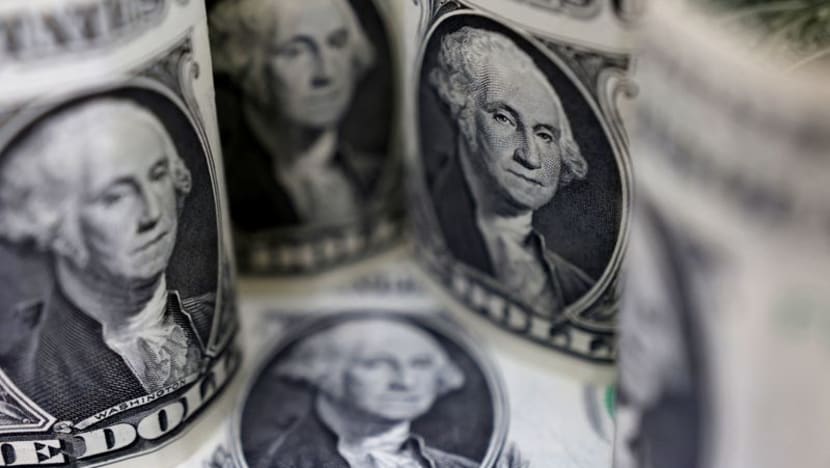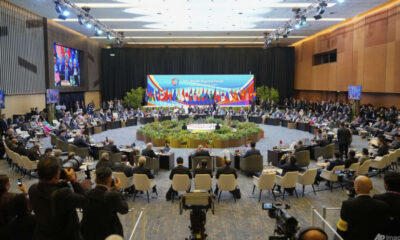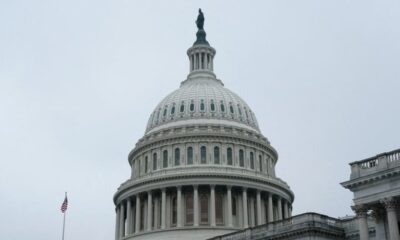Business
Dollar Gains Ground Against Euro and Yen Amid Economic Uncertainty

The U.S. dollar strengthened against both the euro and the yen, but remained close to last week’s lows. This shift follows disappointing jobs data from the United States, which increased expectations for potential cuts in interest rates by the Federal Reserve. Investors are now focusing on upcoming services data from the Institute for Supply Management (ISM), which analysts predict will demonstrate a slight rebound that could further support the dollar.
Goldman Sachs projects that the Federal Reserve will implement three consecutive rate cuts of 25 basis points starting in September. A more significant reduction of 50 basis points may occur if the next jobs report indicates a continued rise in unemployment. The bank also believes the European Central Bank has completed its current cycle of monetary easing. In light of recent trade agreements, economists have raised growth forecasts for both the euro area and Japan, while asserting that the recent U.S. jobs report suggests the economy is operating at near stagnation levels.
Market Reactions and Implications
Recent developments, including the dismissal of the head of the Bureau of Labor Statistics (BLS) and the resignation of Federal Reserve Governor Adriana Kugler, could influence the Federal Open Market Committee’s (FOMC) stance on maintaining independence. Analysts note that the new appointee will only hold one vote on the committee, emphasizing the importance of stability in leadership during this turbulent period.
The euro experienced a decline of 0.25 percent, trading at $1.1544 after peaking at $1.15855 on Friday. Meanwhile, the dollar index, which gauges the U.S. currency against six major counterparts, rose by 0.30 percent to 98.864, recovering from a one-week low of 98.609 earlier in the session. According to Thierry Wizman, a global forex and rates strategist at Macquarie Group, traders interpreted the U.S. jobs report as providing President Donald Trump with further justification to consider replacing Federal Reserve Chair Jay Powell with someone who may adopt a more dovish monetary policy approach.
The British pound also saw slight gains against the dollar, rising by 0.05 percent to $1.3291. Many traders expect the Bank of England to maintain its current rate guidance during its upcoming policy meeting, reflecting confidence in the UK’s economic stability.
Future Rate Projections and Global Economic Context
Market analysts are currently pricing in a 92 percent likelihood of the Federal Reserve cutting rates in its September meeting, a significant increase from 63 percent a week prior. The projections also indicate a total of 130 basis points in rate cuts by October 2026, which is 30 basis points higher than estimates made before the recent jobs data was released.
The Japanese yen fell by 0.34 percent to 147.6 per dollar. This decline followed the release of minutes from the Bank of Japan’s June policy meeting, revealing that some board members are considering the resumption of interest rate increases if trade tensions subside. Derek Halpenny, head of global markets research at MUFG, noted that potential rate hikes could also aim to stabilize the Japanese government bond market. Yet, instability within this market continues to pose risks for the yen.
Ongoing uncertainties surrounding tariffs add to the complexity of the global economic landscape. Recent tariffs imposed by the Trump administration on imports from numerous countries have raised concerns regarding the health of the global economy. A senior EU official confirmed that the European Union faces a comprehensive 15 percent tariff on goods entering the United States.
The Swiss franc continued its downward trajectory, declining by 0.25 percent to 0.8103 per dollar, following a 0.5 percent decrease in the previous session. Nevertheless, it remains above levels observed before the release of Friday’s economic data, which hovered around 0.8128. Switzerland is reportedly seeking to present a “more attractive offer” in trade negotiations with Washington to avoid a daunting 39 percent import tariff on Swiss goods that could threaten its export-driven economy.
As the market awaits more definitive economic data, the interplay between currency valuations and central bank policies will remain a focal point for investors navigating this uncertain financial landscape.
-

 Business5 months ago
Business5 months agoKenvue Dismisses CEO Thibaut Mongon as Strategic Review Advances
-

 Lifestyle4 months ago
Lifestyle4 months agoHumanism Camp Engages 250 Youths in Summer Fest 2025
-

 Sports4 months ago
Sports4 months agoDe Minaur Triumphs at Washington Open After Thrilling Comeback
-

 Sports5 months ago
Sports5 months agoTupou and Daugunu Join First Nations Squad for Lions Clash
-

 Top Stories5 months ago
Top Stories5 months agoColombian Senator Miguel Uribe Shows Signs of Recovery After Attack
-

 World5 months ago
World5 months agoASEAN Gears Up for Historic Joint Meeting of Foreign and Economic Ministers
-

 Health4 months ago
Health4 months agoNew Study Challenges Assumptions About Aging and Inflammation
-

 Business5 months ago
Business5 months agoOil Prices Surge Following New EU Sanctions on Russia
-

 Entertainment4 months ago
Entertainment4 months agoDetaşe-Sabah Violin Ensemble Captivates at Gabala Music Festival
-

 Entertainment4 months ago
Entertainment4 months agoBaku Metro Extends Hours for Justin Timberlake Concert
-

 Top Stories5 months ago
Top Stories5 months agoRethinking Singapore’s F&B Regulations Amid Business Closures
-

 Business5 months ago
Business5 months agoU.S. House Approves Stablecoin Bill, Sends to Trump for Signature









